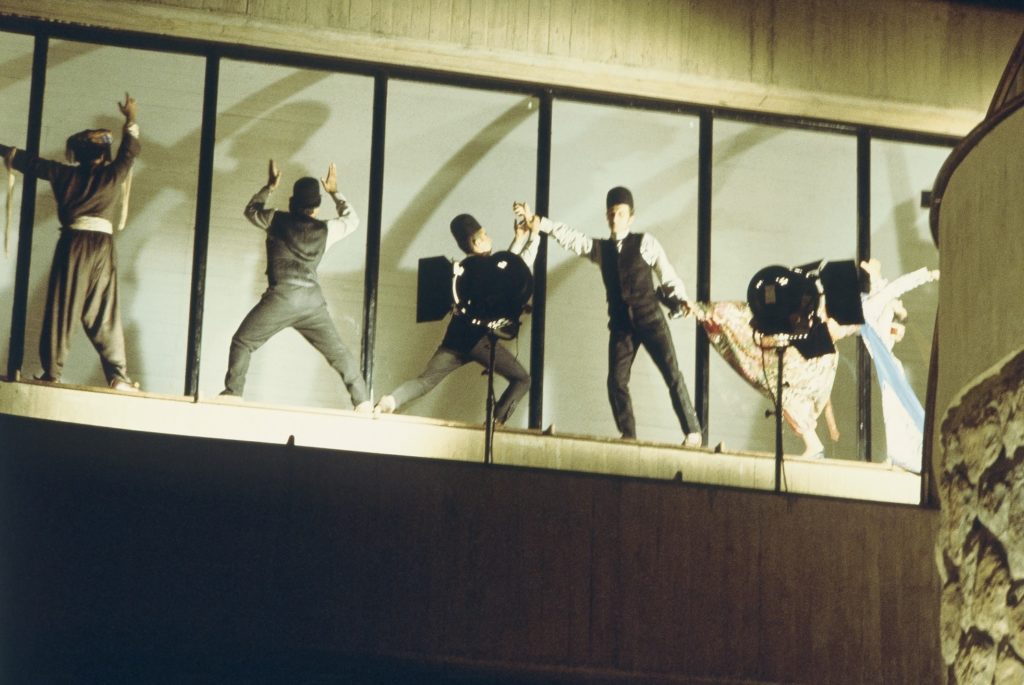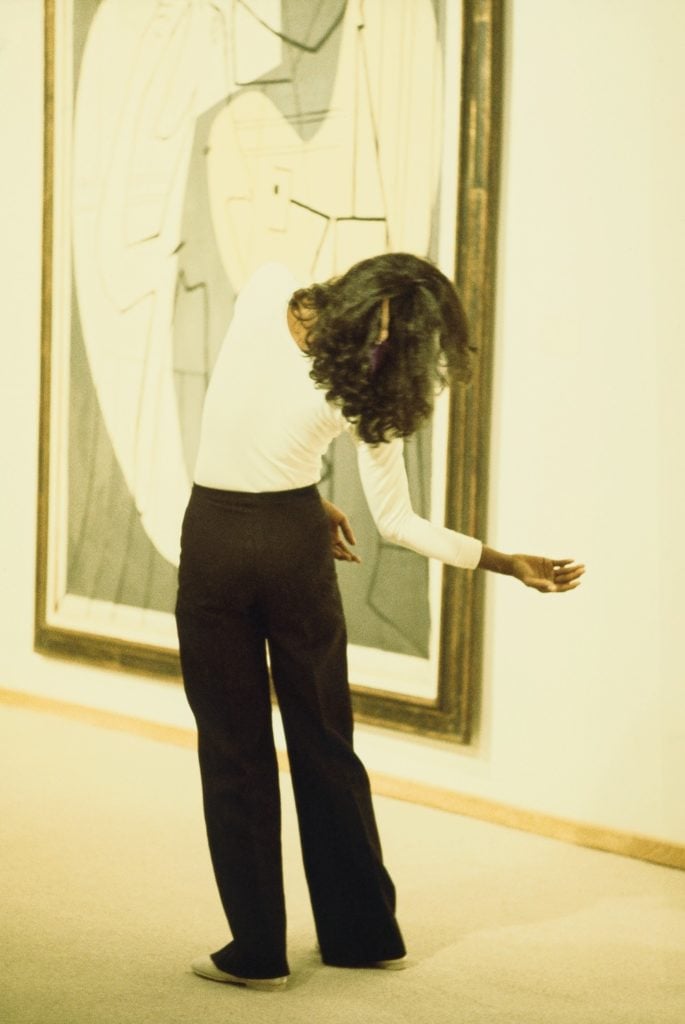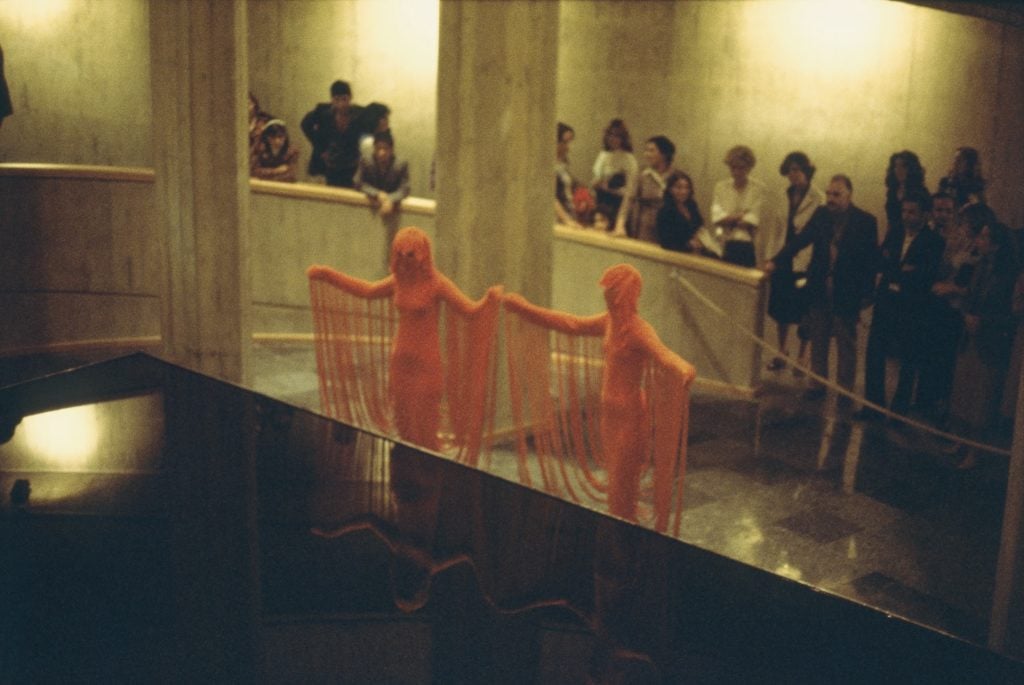Art World
Photography Exhibition Gives Berliners a Rare Look at Tehran’s Legendary Modern Art Collection
Tehran's contemporary art museum holds a massive Modern art collection that has been kept mostly locked away since the 1979 revolution.

Tehran's contemporary art museum holds a massive Modern art collection that has been kept mostly locked away since the 1979 revolution.

Alyssa Buffenstein

Tehran’s collection of Modern art is said to be one of the world’s greatest, but most art lovers haven’t seen it—the majority has been locked away in storage at the city’s Museum of Contemporary Art (TMoCA) since 1979. So when 60 works—30 by western Modern megastars, and 30 by Iranian artists—were set to travel to Berlin for a 2016 exhibition, excitement was high. But after months of negotiations, cancellations, and new agreements fraught with diplomacy, Berlin finally pulled the plug on the show.
Now, it seems the next best thing for Berliners is an exhibition by Iranian photographer Jila Dejam, a onetime TMoCA insider, who captured behind-the-scenes moments from the collection’s very first installation at the museum and its crowded public opening in 1977.
“TMoCA Opening 1977,” on view until April 13 at the Box Freiraum gallery, marks the first time Dejam’s photographs are seen by the public. It is a timely show that would have coincided with the planned exhibition of the Shah Collection at Berlin’s Gemäldegalerie—the mysterious trove of artworks amassed by Farah Diba Pahlavi, the last empress of Iran.

Dance performance in front of Pablo Picasso’s Le Peintre et son modèle (1927). Photo ©Jila Dejam, courtesy the artist and Box Freiraum.
The show’s promotional image—and the first photograph the viewer sees in the gallery—is of a person dancing in front of a 1927 painting by Pablo Picasso, Le Peintre et son modèle. Nothing about the photograph necessitates that it was taken in Iran, and the lack of audience in the photo makes for a striking image: who is this person, and why are they contorted in such a way inside a museum?
It is this lack of a feeling of place that would, just two years later, be one factor in the locking away of the museum’s collection of Western works by a star-studded list of names including Picasso, Braque, Giacometti, Duchamp, Calder, Pollock, Rauschenberg, Johns, Lichtenstein, and Warhol—thought today to be worth billions of dollars—into its basement.
Farah Diba Pahlavi’s husband, Shah Mohammad Reza Pahlavi, was overthrown in 1979 by Islamic revolutionaries, many of whom believed the country was sick with a case of Gharbzadegi: “Westitis,” “Westoxification,” or “Euromania,” an obsession with Western art and culture that obscured Iranian identity.

A performance at the opening of the TMoCA. Photo ©Jila Dejam, courtesy the artist and Box Freiraum.
Before the revolution, evidenced by Dejam’s photographs, Iran indeed had an aesthetic dialogue with the west. The TMoCA building itself, designed by the empress’s cousin, Kamran Diba, is an amalgam of Persian and Western styles, with a winding interior walkway that screams “Guggenheim New York.” The opening was met with much fanfare from the public, who are immortalized wearing the same wide collars, bell-bottoms, and bushy mustaches as their American counterparts at the time.
Dejam captured the vernissage crowd packed into the museum and its courtyard, watching a number of performances that are, unfortunately, unidentified. Performers in costume—two in red bodysuits with fringed wings, for example, or two men in leather vests and white disco pants—part crowds with actions that the contemporary viewer can only speculate on what they could have entailed.

Farah Diba Pahlavi looking at George Braque’s Guitare, fruits et pichet (1927). Photo ©Jila Dejam, courtesy the artist and Box Freiraum.
The photos also show the days leading up to the opening. On one wall, a series of four in black and white capture the installation of Noriyuki Haraguchi’s first Oil Pool, which debuted at Documenta 6 in 1977, and has been on view at the TMoCA since day one. Art handlers carefully pour large tubs of oil into a large, low pool, creating eerie scenes that evoke more of a feeling of some sort of mystical ritual or crime scene, rather than an artwork being installed.
On another wall, a glamorous Farah Diba is seen examining Jackson Pollock’s 1950 Mural on Indian Red Ground, and George Braque’s 1927 still-life Guitare, fruits et pichet. Part documentary and part artworks in their own right, Dejam’s exhibition shows the TMoCA in a way that is truly rare.
“TMoCA Opening 1977” is on view until April 13, 2017 at the Box Freiraum Gallery in Berlin.